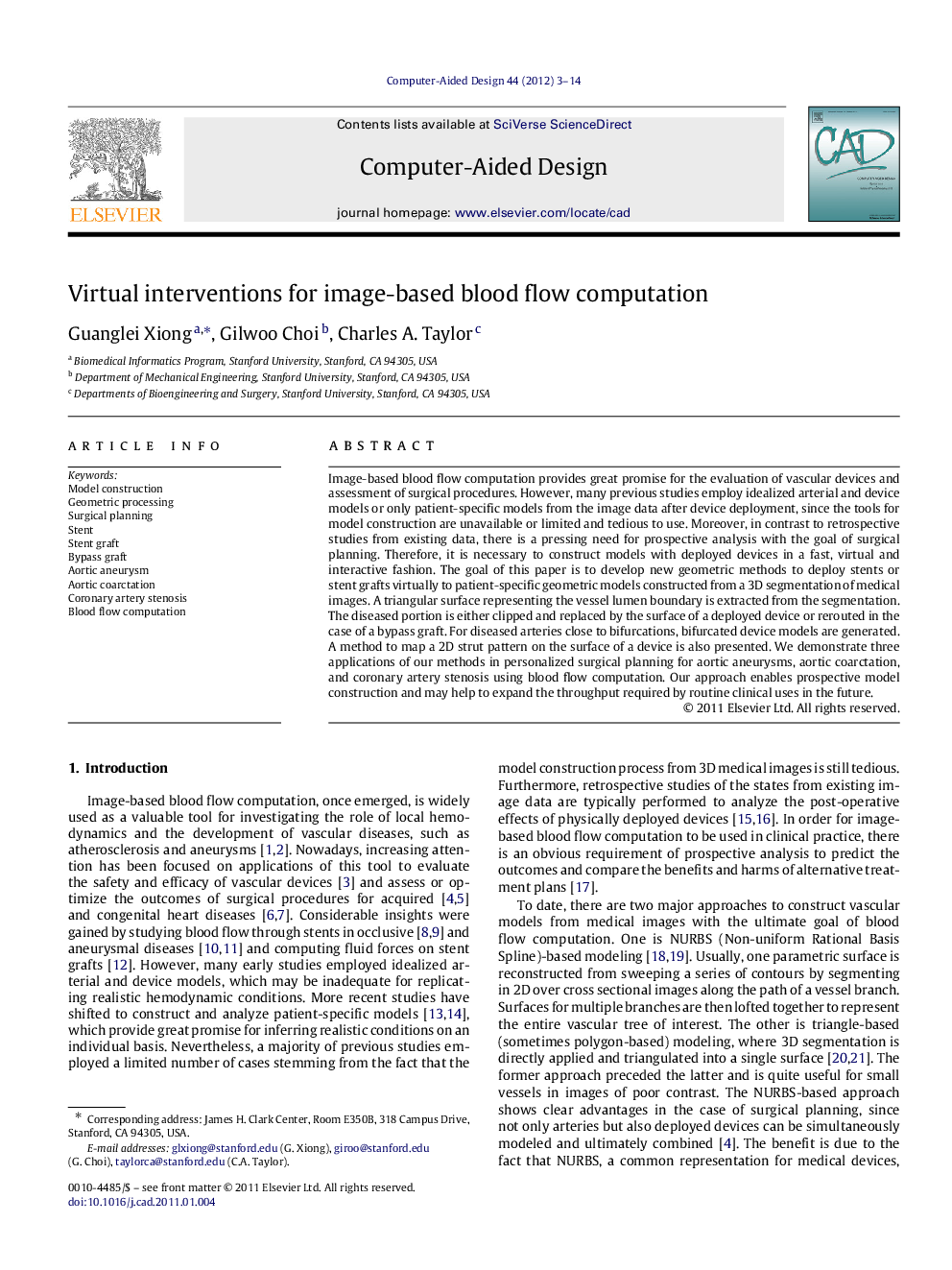| Article ID | Journal | Published Year | Pages | File Type |
|---|---|---|---|---|
| 439535 | Computer-Aided Design | 2012 | 12 Pages |
Image-based blood flow computation provides great promise for the evaluation of vascular devices and assessment of surgical procedures. However, many previous studies employ idealized arterial and device models or only patient-specific models from the image data after device deployment, since the tools for model construction are unavailable or limited and tedious to use. Moreover, in contrast to retrospective studies from existing data, there is a pressing need for prospective analysis with the goal of surgical planning. Therefore, it is necessary to construct models with deployed devices in a fast, virtual and interactive fashion. The goal of this paper is to develop new geometric methods to deploy stents or stent grafts virtually to patient-specific geometric models constructed from a 3D segmentation of medical images. A triangular surface representing the vessel lumen boundary is extracted from the segmentation. The diseased portion is either clipped and replaced by the surface of a deployed device or rerouted in the case of a bypass graft. For diseased arteries close to bifurcations, bifurcated device models are generated. A method to map a 2D strut pattern on the surface of a device is also presented. We demonstrate three applications of our methods in personalized surgical planning for aortic aneurysms, aortic coarctation, and coronary artery stenosis using blood flow computation. Our approach enables prospective model construction and may help to expand the throughput required by routine clinical uses in the future.
Research highlights► The concept of virtual interventions for image-based blood flow computation is developed and implemented. ► Our approach is applied to construct geometric models with subject-specific anatomy and deployed device. ► The techniques include virtual stenting, stent grafting, and bypass grafting. ► They are tested in cases of thoracic and abdominal aneurysms, aortic coarctation, and coronary stenosis. ► We call for future research on fast prospective model construction required by routine clinical uses.
